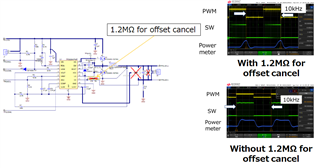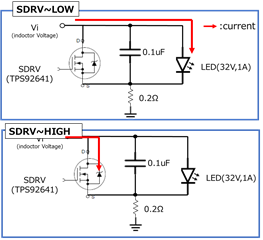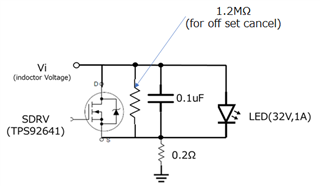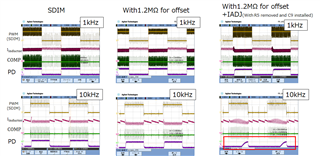Other Parts Discussed in Thread: TPS92641
Thank you for your time.
Please let me ask you another question.
I'm currently using TPS92416EVM, but with the offset canceling resistor installed, the blinking speed becomes slower when driving SDIM. Please explain this mechanism.
Is it slow due to the time constant of Cout and R_offsetcansel?
Thanks
Takeshi








